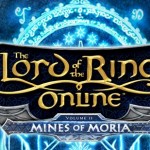 Ottaro was asking how much I liked Lord of the Rings Online (you can read his comment here), and rather than write a 400 word comment I thought I’d write up a more general review. Only it got out of hand so I’m breaking it up into individual posts. This is part one which has an introduction and covers the game content. Part two looks at the system behind the game, part three covers the technology of the game such as the graphics engine, the user interface and so on, and part four provides my overall impressions, a look at the social elements in the game and how immersive I find it. I reserve the right to completely change all that once I actually write the articles and find I’ve waffled endlessly about something else.
Ottaro was asking how much I liked Lord of the Rings Online (you can read his comment here), and rather than write a 400 word comment I thought I’d write up a more general review. Only it got out of hand so I’m breaking it up into individual posts. This is part one which has an introduction and covers the game content. Part two looks at the system behind the game, part three covers the technology of the game such as the graphics engine, the user interface and so on, and part four provides my overall impressions, a look at the social elements in the game and how immersive I find it. I reserve the right to completely change all that once I actually write the articles and find I’ve waffled endlessly about something else.
Background
So that you can get an idea of where I’m coming from with this review, here’s some information about me.
I played EverQuest for something like seven years. I played as a new player who knew nothing, as a player in a big casual guild who sometimes got groups with guild members but often grouped with random people, as someone who ended up in a raid guild one expansion behind the curve, as a ‘hard core’ grouper doing the hardest group content (at one point), as a casual raid-force leader, and all levels in-between. At one point I cared about the ratio of hit points to AC as a warrior, I cared about the amount of avoidance and shielding I had. I spent time looking at upgrades and trying to work out how to gain tiny incremental benefits. I had three maximum level characters (when 80 was the maximum level) and one of them had every useful AA (my warrior) before the last expansion came out. Eventually I just got tired.
I love fantasy and sci-fi, and I deeply love the world that Tolkien built and the characters he wrote about. I love the Lord of the Rings story, world, characters and mythos and I have done so since I was 11 or 12. However, I’m no serious scholar of Tolkien and Middle Earth, so if I think things aren’t in the lore but they are, don’t have me shot.
Before I stopped playing EverQuest (EQ) I’d tried a few other MMORPG’s, EverQuest II (EQII), World of Warcraft (WoW), Star Wars Galaxies (SWG), Guild Wars (GW), Dungeons and Dragons Online (DDO) and Lord of the Rings Online (LoTRO). I had the LoTRO account for over a year, playing on and off before I finally stopped EQ and LoTRO was not the cause. I fell back into LoTRO when I wanted a social on-line game and found that EQ was just too much.
I am very much a casual LoTRO player. I spend some time solo, most time with my wife and every now and then a little time with a few friends. Sometimes we group, sometimes we just chat while we all do our own thing. Before the release of Moria I had a maximum level character (50), but it had taken over 12 months to get there. I’ve tried all the classes to some level or another and all the races. I have never raided, and have spent very little time in the elite dungeons (top end content at various levels). I don’t look hard for item upgrades, when I get gear as rewards I make a snap decision based on which seems best using a bit of guesswork. I’ve read something like three articles on the web to give me a very basic insight into choosing weapons. I have very little idea how my character stats compare to other peoples, in fact, I have very little idea what my character stats are at all.
I play on a roleplaying designated European server (the European instance of LoTRO is run by Codemasters, I guess it’s licensed to them by Turbine, this means that we don’t always get all the features, like my.lotro.com for example). The roleplaying server keeps the number of trolls in the out of character chat down to a minimum. Although I don’t roleplay in any real sense I do act in-character as much as possible in the /say channel (i.e. the channel which emulates characters talking to those nearby) and if you want lots of roleplaying it’s there for the taking.
1. Content
1.1 Races
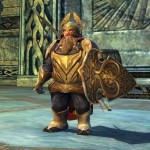 There are four playable races, taken directly from the source material. The races of men, hobbits, elves and dwarves. No you can’t play Istari, no you can’t play an Ent, and no, you can’t play an Orc (as a player character at least, more on that later). In modern games that’s a pretty short list of races, but then what we’re dealing with here is some serious source material to which Turbine are honour bound to follow. It wouldn’t make sense within the scope of the books to allow you to play anything other than those major races. Personally, I don’t find the choice of race a serious restriction. Within each race there’s plenty of choice about how you look, your heritage, worn gear and appearance that means everyone looks pretty different for the most part. Race determines which classes you can pick although the choices are pretty broad (I won’t list them all) and different races have very minor advantages. For me the advantages are so truly minor that I pick race based on the character concept I want to play and I find that a good thing. It avoids min-maxing and leads to a more roleplaying based racial choice.
There are four playable races, taken directly from the source material. The races of men, hobbits, elves and dwarves. No you can’t play Istari, no you can’t play an Ent, and no, you can’t play an Orc (as a player character at least, more on that later). In modern games that’s a pretty short list of races, but then what we’re dealing with here is some serious source material to which Turbine are honour bound to follow. It wouldn’t make sense within the scope of the books to allow you to play anything other than those major races. Personally, I don’t find the choice of race a serious restriction. Within each race there’s plenty of choice about how you look, your heritage, worn gear and appearance that means everyone looks pretty different for the most part. Race determines which classes you can pick although the choices are pretty broad (I won’t list them all) and different races have very minor advantages. For me the advantages are so truly minor that I pick race based on the character concept I want to play and I find that a good thing. It avoids min-maxing and leads to a more roleplaying based racial choice.
Race also determines your home city (which in turn determines the quests you’re exposed to early on), but since there is virtually free instant travel between the four home city locations that’s no barrier to starting where you enjoy most.
I like the races in LoTRO, they’re sufficiently visually different to ensure you know you’re playing a hobbit or whatever, and their animated socials are subtly different, but you can choose them because you want to play a character, not because you feel +10 regen might give you a combat advantage.
1.2 Classes
I’m writing this review after the Mines of Moria has been released, which means there are more classes than there used to be (two more) and you could easily argue that the new classes diverge from the source material more than anything in the game to date. The original classes are,
- Guardian (primary tanking class)
- Champion (pure DPS melee class)
- Hunter (pure DPS ranged and melee class)
- Minstrel (main ‘healing’ class, least canon of the original classes)
- Loremaster (pet class, minor ‘healing’, some crowd control functions, not Gandalf but close)
- Burglar (a debuffing class, plus melee DPS)
- Captain (a buffing class, some ‘healing’, minor pet function, light tank)
With the Mines of Moria two more classes have been added,
- Rune Keeper (mix of ‘healing’ and combat magic based on rune lore)
- Warden (light tank, some dps)
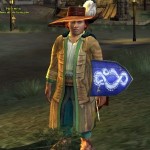 That’s actually a pretty broad range of classes, and they all (to me) play very differently. Turbine has ensured that each class has a core concept and the class builds around that, and although the concepts are similar they’re generally not identically implemented or shared. For example, Champions build Fervour by using basic attacks. More Fervour allows them to use more complex attacks which in turn reduces their Fervour. This means Champions get more deadly as a fight goes on, since they have time to build up to more powerful attacks. Guardians work with different self buffs (stances) which either increase their attack blocking, attack parrying or offensive skills. This allows the Guardian to work differently depending on the group make-up and the difficulty of the fights. Captains use buffs and pets to improve a group’s ability to survive combat, they can also pick one person to be a shield-brother and as such be the recipient of special buffs and skills in combat (like healing or DPS increasing buffs). I won’t describe all the classes, it would take too long.
That’s actually a pretty broad range of classes, and they all (to me) play very differently. Turbine has ensured that each class has a core concept and the class builds around that, and although the concepts are similar they’re generally not identically implemented or shared. For example, Champions build Fervour by using basic attacks. More Fervour allows them to use more complex attacks which in turn reduces their Fervour. This means Champions get more deadly as a fight goes on, since they have time to build up to more powerful attacks. Guardians work with different self buffs (stances) which either increase their attack blocking, attack parrying or offensive skills. This allows the Guardian to work differently depending on the group make-up and the difficulty of the fights. Captains use buffs and pets to improve a group’s ability to survive combat, they can also pick one person to be a shield-brother and as such be the recipient of special buffs and skills in combat (like healing or DPS increasing buffs). I won’t describe all the classes, it would take too long.
I will just say that I enjoy how different each of the classes is to play even if they share roles with another class, and I find that any initial apparent simplicity soon grows into meaningful and complex combat choices as skills become available or improve. I’ve put healing in quotes, because as I’ll explain later, it’s not true healing in the traditional sense although it does perform the same role.
I was a little disappointed to see the Rune Keeper class, because to me it suggests Turbine is moving away from the lore and just adding classes to justify selling expansions. If you can point to the real lore behind this class let me know.
1.3 Locations
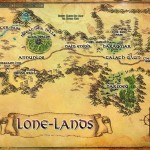 Ah, Middle Earth. Such a rich source of material. This is one of the great joys of the game for me, walking into the Prancing Pony, climbing atop Weathertop mountain, seeing the party tree in The Shire. I wonder if the folks at Turbine think it’s cheating to have such a massive amount of pre-written lore to base their world on? And yet there’s probably still a huge amount of work that goes into connecting it all together, fleshing out the locations mentioned only briefly and creating a consistent vision of Tolkien’s world. Personally, I think they do amazingly well. I don’t know how much real information in Tolkien literature there is about the Trollshaws or the Lone-Lands, but the locations in game are big, rich and immersive.
Ah, Middle Earth. Such a rich source of material. This is one of the great joys of the game for me, walking into the Prancing Pony, climbing atop Weathertop mountain, seeing the party tree in The Shire. I wonder if the folks at Turbine think it’s cheating to have such a massive amount of pre-written lore to base their world on? And yet there’s probably still a huge amount of work that goes into connecting it all together, fleshing out the locations mentioned only briefly and creating a consistent vision of Tolkien’s world. Personally, I think they do amazingly well. I don’t know how much real information in Tolkien literature there is about the Trollshaws or the Lone-Lands, but the locations in game are big, rich and immersive.
The further you travel away from the starting locations in the game, the tougher the quests and monsters get. Within each major area there is also a range of difficulty with quests moving you along into tougher and tougher spots. For example, the Lone-Lands is reached via Breelands to the West. The first location you discover is the Forsaken Inn which has a bunch of quests lined up for you. As you gain levels you naturally range further afield to the north and east to complete more quests, and so you arrive at Ost Guruth which in turn has a bunch of even harder tasks for you to undertake. Eventually you travel further east and arrive in the Trollshaws, and this progression continues throughout the entire Middle Earth realm. However, the travel and progression isn’t entirely linear, locations are spread around and some areas have specially designed challenging spots which you can come back to later. For example, you might decide to forgo the Trollshaws and instead travel back to The Shire and then north towards Evendim, or go north from Bree to Trestlebridge and on to Esteldin. Or you may return to the Lone-Lands at a later date to take on the elite creatures of Garth Agarwen.
The outdoor areas are richly populated with scenery, wild life and enemies. There are shared dungeons, and fellowship or solo instance dungeons depending on the quests you’re involved with, that need to be explored and they are atmospheric, unique and interesting. There is a clear difference between the cellars of houses on the outskirts of Bree and the giant sprawl of Goblin Town below the Misty Mountains.
I know that so far my review has been overwhelmingly positive, and this section is no different. I can find virtually no fault with the locations within LoTRO. They evoke exactly the right feeling of Middle Earth for me, from gigantic statues formed from the very mountains on either side of a river, to tiny doors in hobbit holes in The Shire. Exploring the world is encouraged, rewarded through experience, character titles, and traits (discussed later). The entire existence of some quests are based on visiting well known locations, but even without specific quest driven exploration the world is so beautifully put together that running around it and seeing the sights is a simple joy.
1.4 Travel
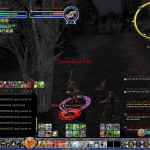 It’s worth discussing travel briefly. The major travel method between locations is by horse, which costs money. With the exception of the four starting locations, you may only travel to somewhere new once you have discovered the stable-master in that location (if they have one). Most major quest hubs have a stable-master to discover. However, the horses make up a network and there isn’t always a direct route between any two points. For example, to travel from Bree to a location within the Trollshaws you may have to first pay for a horse ride to Ost Guruth and then take a second horse from there to your desired final destination. In some cases you may need to make two or three connecting horse journeys. Many of these journeys require you to experience the horse trip (i.e. sit and watch the scenery go by), but once you reach particular levels, or earn enough reputation with an area or complete enough quests you may be able to unlock swift-travel which reduces the journey time to a few seconds. I think the travel system is just right, you are encouraged to make your own way to areas you have never been to, but once there you can eventually unlock a much faster way as well. Travel is not free, but not prohibitively expensive either.
It’s worth discussing travel briefly. The major travel method between locations is by horse, which costs money. With the exception of the four starting locations, you may only travel to somewhere new once you have discovered the stable-master in that location (if they have one). Most major quest hubs have a stable-master to discover. However, the horses make up a network and there isn’t always a direct route between any two points. For example, to travel from Bree to a location within the Trollshaws you may have to first pay for a horse ride to Ost Guruth and then take a second horse from there to your desired final destination. In some cases you may need to make two or three connecting horse journeys. Many of these journeys require you to experience the horse trip (i.e. sit and watch the scenery go by), but once you reach particular levels, or earn enough reputation with an area or complete enough quests you may be able to unlock swift-travel which reduces the journey time to a few seconds. I think the travel system is just right, you are encouraged to make your own way to areas you have never been to, but once there you can eventually unlock a much faster way as well. Travel is not free, but not prohibitively expensive either.
There are other travel methods, after completing the opening quest you receive a map which can be used to transport you to a home location once every hour, and you can change your home location by using a milestone in nearly all quest centres in the game. Guardian’s can create a whistle that other players can use to summon them from any distance. Hunters can transport their fellowship or themselves to a very wide range of major game locations, under the guise of finding a fast route across land. Captains can use a horn to summon members of their fellowship to them (once the Captain reaches level 40) from anywhere in the world. Finally, some especially hard to reach locations have a summoning horn, that anyone can use to summon a fellowship member to them. These are usually placed around the tougher challenging areas, to encourage people to form groups (fellowships) to take them on, without having to wait for 20 minutes while people journey there by horse.
Outside of all those methods you can run anywhere in the game, from one end of the world to the other, and if you make it to level 35 and earn yourself 4 gold and 200 silver, you can buy your own horse. Personal horses make travel quicker than by foot, but they’re not quite as quick as the stable-master horses. If you get attacked while on a personal horse, eventually the horse vanishes (you can summon it again once out of combat), this doesn’t happen with stable-master horses since you’re ignored by everything in the world when on one. Personal horses are a nice convenience and can take the tedium out of some of the longer runs.
1.5 Quests
Quests are the meat of the content in LoTRO, they drive the majority of the activity in game and provide the great bulk of the gear you end up using, as well as providing the greater percentage of earned experience (either as part of the quest reward, or indirectly by causing you to engage in combat in the completion of the quest). To anyone familiar with WoW, EQII or the newer MMORPG’s the quest system will be very familiar.
You have a journal which holds a limited number of quests (~40), quests have difficulty ratings and some have level restrictions (so you can’t get them until a certain level). They are further broken up into regular quests (usually soloable), mini-fellowship quests (need around 3 people to beat at the appropriate level), and fellowship (need a full fellowship to beat at the relevant level). It’s usually possible to solo mini-fellowship and fellowship quests eventually, but depending on the quest you may be a surprising number of levels past the recommended level before it’s easy.
Quests within a difficulty range aren’t always the same toughness, it’s a guide really, and depending on the class you play you may find some types of missions easier than others. The activity types are pretty broad, collect items (on the ground), kill creatures, collect items (from creatures), save people from enemy attack, escort people away from dangerous locations, find people, find places, and all the combinations there-of. The strength in the quest system is not the raw quest goal, it’s the back story and the reason for carrying the task out.
LoTRO provides a rich and engaging quest experience, with descriptive text, interesting story and engaging activities. It is a breath of fresh air after seven years of EverQuest. I’ll talk about the script engine later, but the quest complexity is pretty high in some cases and almost always fault free (it’s not entirely perfect). Quests are often progressive, so once you’ve completed a quest to find the enemy stronghold you can be sure you’ll be sent back to wipe them out. You can usually drop a quest from your journal and get it again later no matter how far through a quest series you were, but you will lose any progress you made on individual steps. For example, you may be asked to collect three types of flower (10 of each), and once done, you complete that quest and get a second, to take the resulting drink to another camp. If you complete the first quest, but need quest room later and drop the second quest before completing it, you can pick up where you left off and get the second quest back again. This is a really strong selling point of the quest system, because the quests are broken up into major activities which you can break off and come back to later, as well as being composed of smaller elements which must all be completed to finish that specific overall activity.
On top of the hundreds of regular quests in the game, there are the quests which make up the Books. Each Book is a series of quests which tell the main story of the Lord of the Rings, or related stories in around the edges. These are the quests which eventually allow you to interact with the Fellowship of the Ring, and to play your part in the War of the Ring. This series of quests is just superb and the chance to take any part in the War is a major reason for my enjoyment of the game.
I refuse to believe any fan of the books or the movies will not smile a huge grin the first time they meet Aragorn in the Prancing Pony and he tasks them with an important mission.
Quest rewards range from coin, experience points, gear (armour, weapons, jewellery), food / drink / potions, reputation (more on that later), item based experience for levelling legendary items (Moria only) or some combination of the above. In many cases you get to choose between different item rewards, sometimes there won’t be a class appropriate item in which case you just earned some extra coin.
My experience is that quest rewards are more than adequate gear to get you through the game. Initially you may want to supplement that with store bought or player made items, and later on you may find one or two items you want to make that are better, but in general the quest gear will be sufficient to get you through levels and onto better quests and better gear. I’ve no doubt at the very high end of the game this may not be so true, but for casual players it certainly is.
1.6 Reputation
I touched briefly on reputation in the quest section, essentially there are different factions within the world with whom you can build your reputation. You do this through quests with specific reputation rewards or collecting / making items which the different groups seek.
Reputation allows you access to vendors which sell quests rewards you may have missed, tougher horses, better looking clothes, unique recipes, and other special items. They are usually minor upgrades over equipment obtained in the regular way, or nice-to-haves which give you a slight edge but are not critical. Building reputation to useful levels can take a long time, and it’s something I haven’t invested a great deal of effort in, because it’s a pure time sink. It’s there if you want it, it won’t kill the game if you don’t do it, and in some cases you naturally build reputation as you go anyway.
1.7 Crafting
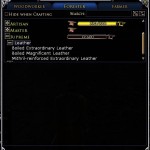 I’ll keep the crafting section brief, I promise, otherwise this is going to turn into something even more epic. There are ten individual crafting skills in LoTRO (Prospector, Forester, Farmer, Cook, Jeweller, Metalsmith, Scholar, Tailor, Weaponsmith, Woodworker). However, there are a smaller number of crafting roles (vocations) each of which combines three of those skills. For example, an armourer can prospect, is a metalsmith and a tailor whereas a historian is a scholar, weaponsmith and farmer and a tinker is a cook, jeweller and prospector. One common theme throughout the vocations is that you can rarely collect all of your own raw ingredients. For example, while an armourer can prospect and so collect and refine their own metals for metalsmithing, they need the processed hides from animals for both tailoring and some other metalsmithing elements. Those hides can only be processed by foresters. Historians can make weapons, but can not collect and process their own metal. In essence, each vocation is forced to rely on someone else for at least some of their raw materials.
I’ll keep the crafting section brief, I promise, otherwise this is going to turn into something even more epic. There are ten individual crafting skills in LoTRO (Prospector, Forester, Farmer, Cook, Jeweller, Metalsmith, Scholar, Tailor, Weaponsmith, Woodworker). However, there are a smaller number of crafting roles (vocations) each of which combines three of those skills. For example, an armourer can prospect, is a metalsmith and a tailor whereas a historian is a scholar, weaponsmith and farmer and a tinker is a cook, jeweller and prospector. One common theme throughout the vocations is that you can rarely collect all of your own raw ingredients. For example, while an armourer can prospect and so collect and refine their own metals for metalsmithing, they need the processed hides from animals for both tailoring and some other metalsmithing elements. Those hides can only be processed by foresters. Historians can make weapons, but can not collect and process their own metal. In essence, each vocation is forced to rely on someone else for at least some of their raw materials.
Within each craft there are several ranks of skill, and within each rank there are two levels of proficiency. The first lets you make things, and completion of the second level allows you to make critical successes increasing the yield or quality of your results. Completion of the first level in a rank allows you to make items of later ranks and so on.
Recipes are collected from mobs, bought or learned when you first gain a skill or a new rank. Some recipes can only be made once before being forgotten (special items) and require rare drops, others are never forgotten and require more common items. Crafting must take place at a designated crafting station, for example a forge or oven. Tougher recipes require higher quality crafting stations which in turn are accessed through quests or reputation.
You can specify how many items to make assuming you have sufficient raw materials, and then walk away from the computer and come back when they’re all done. I find the crafting system a little tedious, the rewards for putting in a lot of effort are okay but not amazing, and the amazing rewards are only available if you put a serious amount of effort in (this may be a good point in some respects). I do however love being able to set the counter to 100 and then walk away and do some washing up or something while my dwarf beats out 100 copper ingots.
I’m not a good judge of crafting systems, I do it on my characters as something to pass the time when I need a distraction that does not include skewering orcs, it can certainly take up a lot of time, and it can provide useful benefits (my Guardian is wearing a suit of armour he created at level 54). Ah well, not all that brief after all, sorry.
1.8 Summary
There’s content galore in the Lord of the Rings Online, it’s rich, interesting and very high quality. You do feel part of the wider story, and you can see how the characters in the books and movies led to the development of the different classes.
Okay, that’s it from me in part one. Part two covers the game system itself, combat, the character stats and everything which makes up how the system works. Hope you’ll join me for that at a later date.

Waiting with baited breath for parts 2 and 3. (baited breath.. is that how its said?)